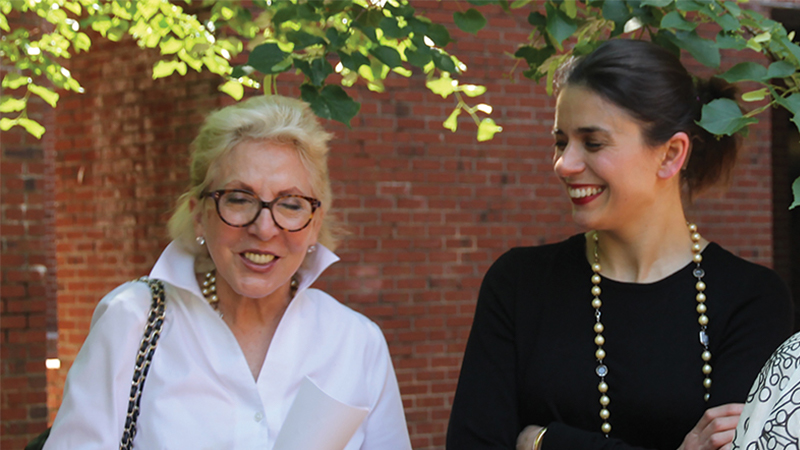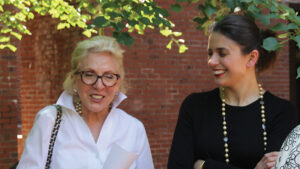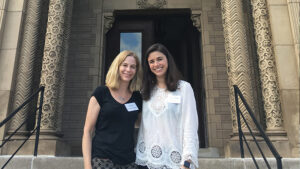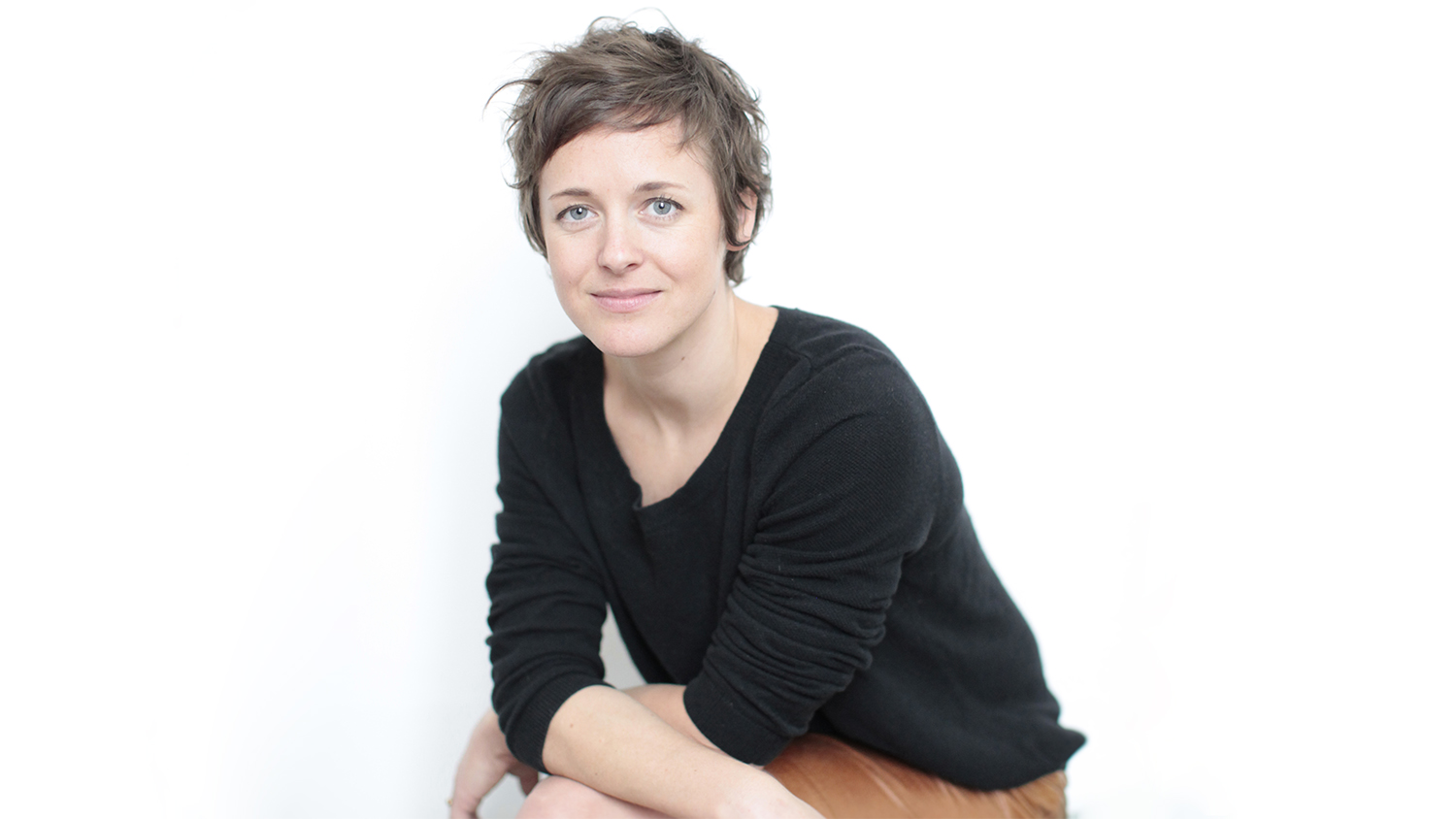Assistive Technology: Designing for Users’ Needs

“I have never had hearing since birth. I’m profoundly deaf,” says Alexandra Grossi [MGD ’17] without hesitation. Grossi is determined not to make her ‘disability’—which she reframes as not a disability, but an inability to hear—a factor in who she is, what she can do, or her ability to influence change. “Eyeglasses once represented the stigma of a disability,” she says. “Now they are considered a style trait with designer glasses.” She’s got a point.

Alexandra Grossi was in her first year of the Master’s program in Graphic Design (MGD) when she got her second cochlear implant (CI). The MGD program enabled her to think critically about the tools she was so reliant on for her way of life. Having spent her life conforming to the variable tools and applications that could provide mainstream inclusion for her, she had a clear understanding of the missed opportunities and injustices for those with disabilities, specifically the hearing impaired.
In 1999, Grossi received her first CI, which is a surgically implanted electronic device that provides digital sound. The implant delivers electrical stimulation to the cochlea, which the brain interprets as sound. The CI relies on the implant and an external sound processor that is attached by a magnet to the back of the ear.
In 2016, she upgraded her CI and received a second implant, providing the bilateral hearing she was missing after the first surgery. This was pivotal for her. In addition, the upgrade came with an external remote, which seemed at first impression to be a great advancement from her prior model.
CIs aren’t just convenient, high-tech devices—they are life-changing tools that users depend on. However, users are unlikely to switch brands due to the associated costs and the need for additional surgery. In other words, a CI user is “stuck with the device,” unlike a smartphone or laptop consumer, who has a plethora of choices and options and can easily upgrade to another product that provides better performance or preferred features.
With the new external remote, Grossi’s expectations included simplified setting changes and easy-to-use functioning that would improve the experience for CI users. She was quickly discouraged, however. “The remote control was not only counterintuitive and confusing, but tedious.” She took this “as an insult to all CI users who depend on assistive technology for their way of life.”
One requirement of a CI is to include settings so that in certain environments the user can modify the sounds. For instance, the user should have the ability to increase the volume when someone speaks softly or to increase sensitivity in a noisy room. In many instances, users must rely on an audiologist to adjust these settings.
The process of making critical sound adjustments with her CI’s external remote is “problematic,” Grossi says. Users must navigate through many screens to make changes, and the icons and language are not intuitive. It can take up to 10 steps to reach the screen that allows users to change the volume of their left ear. If answering a phone required as many steps, consumers would be quick to dismiss the product and buy another.
Thus, Grossi’s master’s thesis considered the design of assisted technology devices like CI implants: “I was learning about critical information and systems in design, among other things, and these topics opened up so many possibilities for this kind of thinking. I realized this [CI remote] was a fairly poorly-designed interface, and I was so frustrated as a user. I knew I would do this for my thesis,” she states.
The systems and design methods Grossi refers to include Human-Centered Design and User-Sensitive Inclusive Design, which—in the most basic of terms—support the importance of designing for the user, including incorporating the user’s feedback, emotions, and experiences to arrive at better design solutions. Her thesis looks at the variable design methods that should be considered when developing assistive technology. She collected data and feedback from end-users on their experiences through surveys, interviews, online polling, and interaction with user groups.
“If you give users a voice—which is what my thesis is about—it is important for all users of an assisted technology such as the CI to have a stronger voice in design,” she states. “Even more so than computers or cell phones, because those devices are disposable.”
“If you give users a voice—which is what my thesis is about—it is important for all users of an assisted technology such as the CI to have a stronger voice in design,”
Much of the data collected supports the view that CI users are also frustrated. One user who also wears glasses wants to see a device that would combine his hearing aids and glasses into one. Another respondent recommends that hearing aids be Bluetooth-compatible. These are reasonable requests, and if given the chance, this feedback could lead to better design solutions. Furthermore, these users’ needs must be viewed as those of invested stakeholders and taken seriously. “I have the unique experience of being a CI user and a designer, so I am intimately familiar with the difficulties and the opportunities,” Grossi says.
As part of her thesis, Grossi utilized the data collected to develop unique personas to establish an understanding of the variety of CI users and their daily routines. The resultant user journey maps are intended to promote empathy and ideas in the design exploration process by addressing the question, “How can this experience be better for this persona?” Many of the ideas suggested by Grossi are for functions that are currently not available on CI devices.
She further researched and developed a user interface she calls SoundSpace, which could be connected to a CI remote control that is highly customizable and easy to use. It would provide quick access to control panels for volume and other settings with improved visuals. SoundSpace can seamlessly integrate with a smartphone, computer, or wearables like the Apple watch. Additionally, Grossi explored the opportunity to develop a private, built-in social media network called the SoundSpace Collective, which would be a unique forum for users of SoundSpace to be able to share ideas and new features, and to develop a community. The data generated by users would be invaluable to CI manufacturers, designers, and researchers in the field to help push the progress of the CI interface based on users’ needs.
For Professor Tsai Lu Liu, Head of the Department of Graphic Design and Industrial Design, Grossi’s thesis “is thoughtful and beautiful, a good inspiration for other designers.” He has encouraged her to publish it.
“Hearing aids don’t have to be big and dull,” Grossi states. She wants to shift the paradigm of what it means to design for disability so that it can enable innovation that can be used for advancement in consumer markets. “I firmly believe that good design for many people is good for everybody. There are so many benefits to taking inclusive design seriously. I want everyone to get on the bandwagon.”
“I firmly believe that good design for many people is good for everybody. There are so many benefits to taking inclusive design seriously. I want everyone to get on the bandwagon.”

- Categories:


